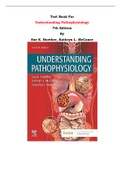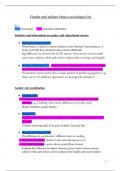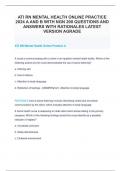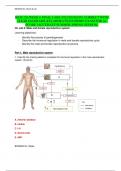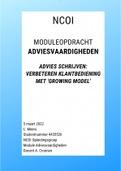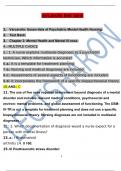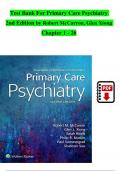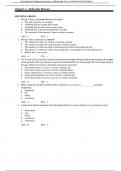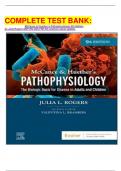Exam (elaborations)
Test Bank For Understanding Pathophysiology 7th Edition By Sue E. Huether, Kathryn L. McCance |All Chapters, Complete Q & A, Latest|
- Course
- Institution
- Book
Test Bank For Understanding Pathophysiology 7th Edition By Sue E. Huether, Kathryn L. McCance |All Chapters, Complete Q & A, Latest|
[Show more]
